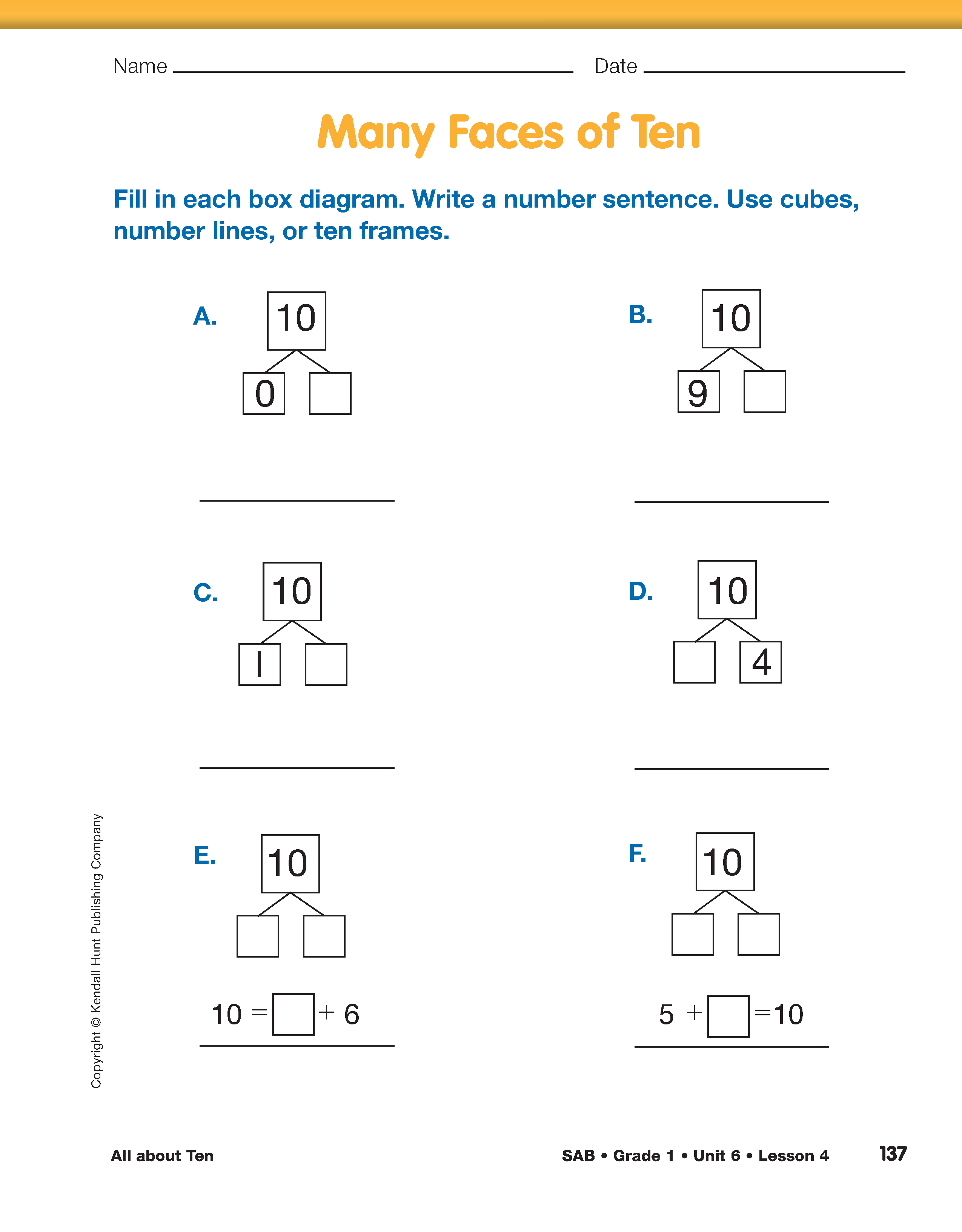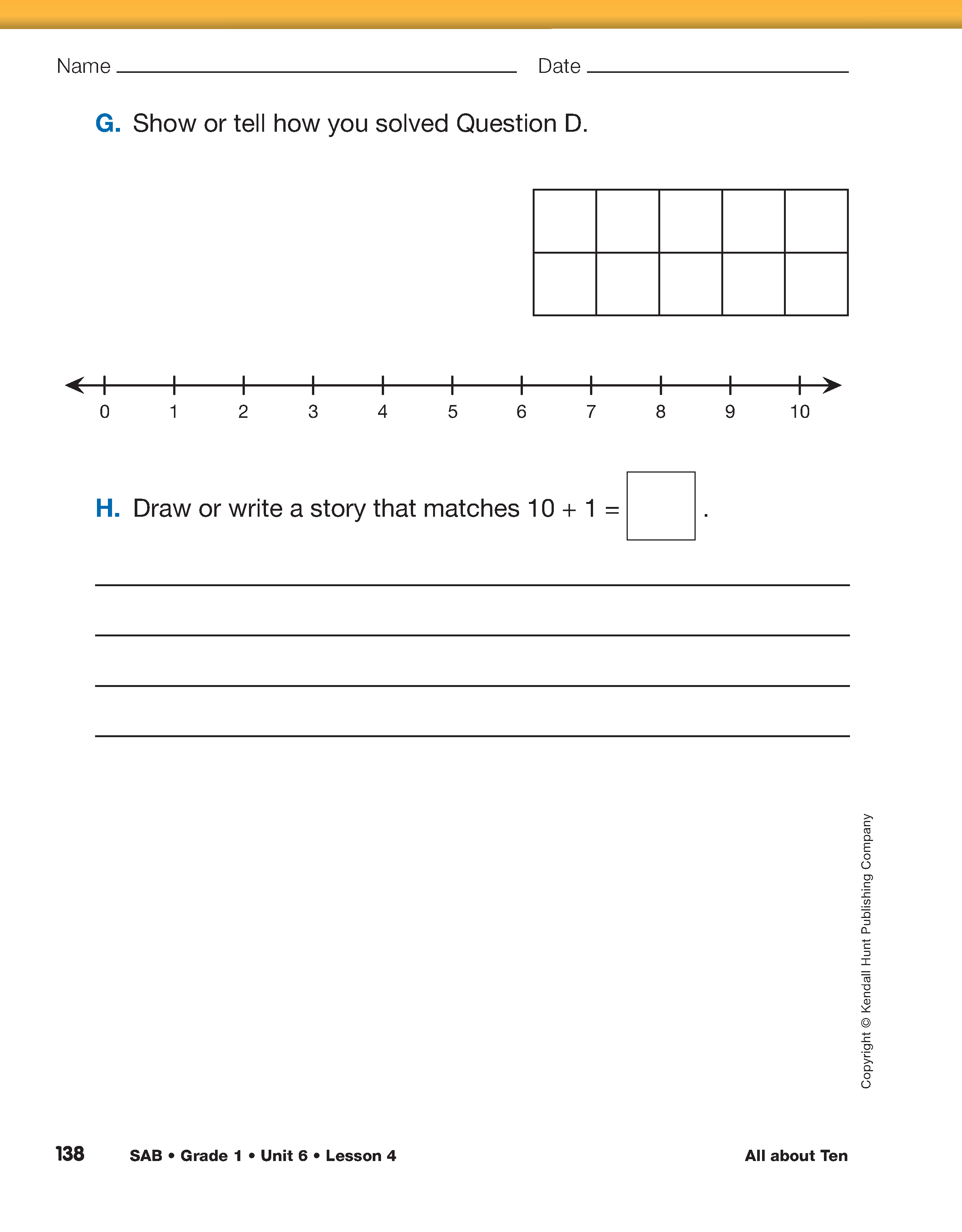Use the Sample Dialog to discuss strategies used to find
the combinations of ten.
Teacher: Let's talk about what strategies we've been
using to play this game. How are you figuring out what card to
ask for to make a ten? Shannon, can you tell us your
strategies?
Shannon: I count in my head. Like if I have an 8, I go
9, 10. That's 2 more, so I know I have to get a 2 so I can
make a 10 with my 8.
Teacher: That's called counting up. Has anyone else used
that strategy?
Frank: I did, but I did it with 7. I went 7, 8, 9, 10. I
need a 4 to make 10. 7 + 4 = 10.
Teacher: Yes, Frank, that's the counting-on strategy.
What do you think about using the counting strategy that way,
Grace?
Grace: He's not right. You need 3 with 7 to make a ten.
Teacher: How do you know that, Grace? Didn't he get his
answer by counting on from 7?
Grace: I didn't count on. I just remember from
yesterday.
7 + 3 = 10.
Teacher: What did we do that helped you remember?
Jerome: I counted on from 7 and I got 3. I went 7
[pauses] 8, 9, 10. It's on my fingers. 8, 9, 10 is 1, 2, 3. So
it's 3, not 4. You need a 3 to make 10.
Teacher: I like the way you explained that, Jerome. Do
you see what your mistake was, Frank? Can you do what Jerome
did? We can also look on the number line and see if that
helps.
Frank: Jerome went 7, then he started counting using his
fingers 8, 9, 10. That's three fingers, not four.
Teacher: So, we start at 7 on the number line. Count the
hops it takes to get to 10. [Frank puts a finger on 7 on his
number line and makes three hops to 8, 9, and 10.] Any other
strategies? Did someone use the ten frame?
Keenya: I did. I had a 4. I know it needs one more to
fill up the top row and that's 5. And the bottom row is 5. So
5 plus one more is 6. So I need a 6 to make 10.
















